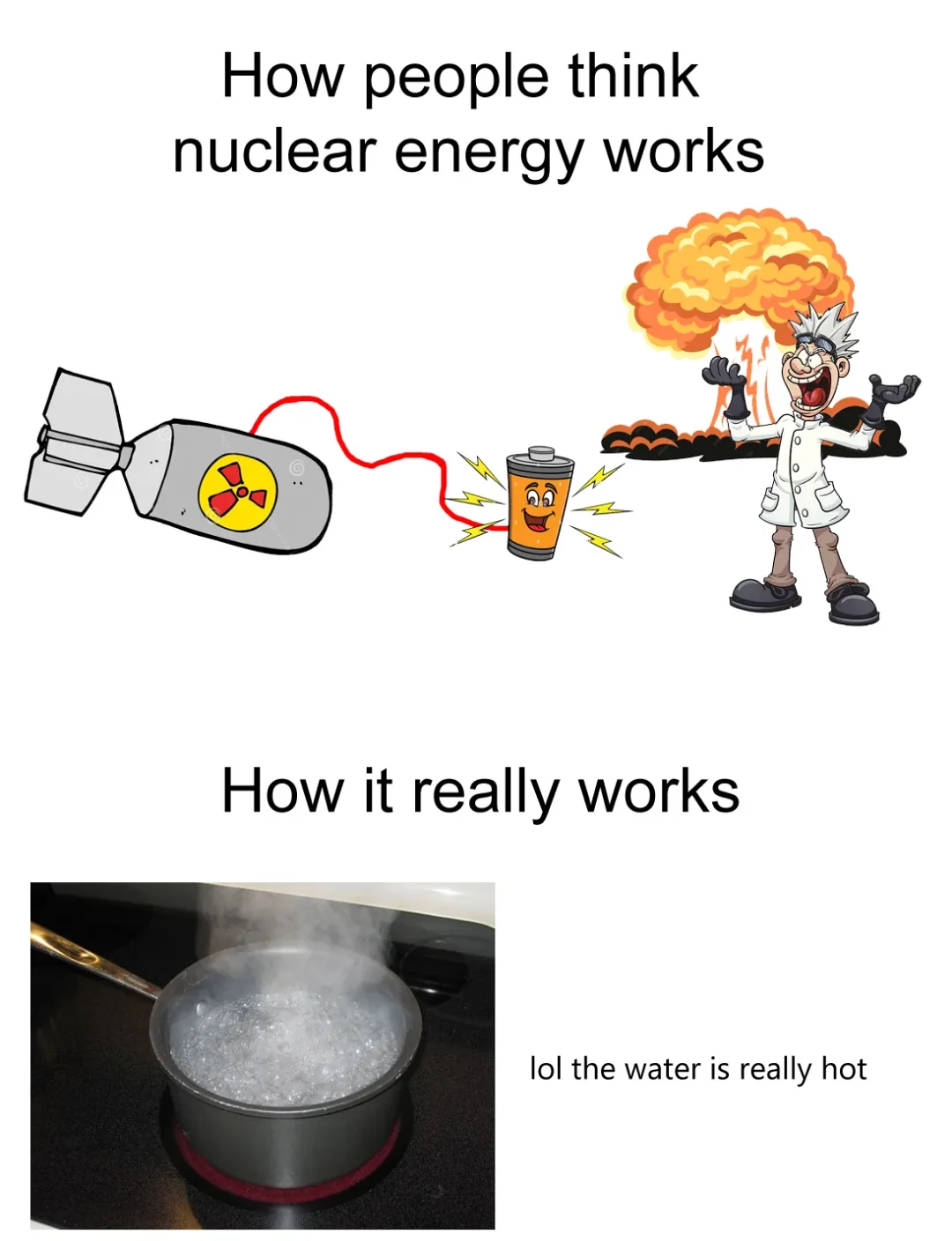this post was submitted on 15 Dec 2024
1043 points (96.9% liked)
Science Memes
14009 readers
3553 users here now
Welcome to c/science_memes @ Mander.xyz!
A place for majestic STEMLORD peacocking, as well as memes about the realities of working in a lab.

Rules
- Don't throw mud. Behave like an intellectual and remember the human.
- Keep it rooted (on topic).
- No spam.
- Infographics welcome, get schooled.
This is a science community. We use the Dawkins definition of meme.
Research Committee
Other Mander Communities
Science and Research
Biology and Life Sciences
- !abiogenesis@mander.xyz
- !animal-behavior@mander.xyz
- !anthropology@mander.xyz
- !arachnology@mander.xyz
- !balconygardening@slrpnk.net
- !biodiversity@mander.xyz
- !biology@mander.xyz
- !biophysics@mander.xyz
- !botany@mander.xyz
- !ecology@mander.xyz
- !entomology@mander.xyz
- !fermentation@mander.xyz
- !herpetology@mander.xyz
- !houseplants@mander.xyz
- !medicine@mander.xyz
- !microscopy@mander.xyz
- !mycology@mander.xyz
- !nudibranchs@mander.xyz
- !nutrition@mander.xyz
- !palaeoecology@mander.xyz
- !palaeontology@mander.xyz
- !photosynthesis@mander.xyz
- !plantid@mander.xyz
- !plants@mander.xyz
- !reptiles and amphibians@mander.xyz
Physical Sciences
- !astronomy@mander.xyz
- !chemistry@mander.xyz
- !earthscience@mander.xyz
- !geography@mander.xyz
- !geospatial@mander.xyz
- !nuclear@mander.xyz
- !physics@mander.xyz
- !quantum-computing@mander.xyz
- !spectroscopy@mander.xyz
Humanities and Social Sciences
Practical and Applied Sciences
- !exercise-and sports-science@mander.xyz
- !gardening@mander.xyz
- !self sufficiency@mander.xyz
- !soilscience@slrpnk.net
- !terrariums@mander.xyz
- !timelapse@mander.xyz
Memes
Miscellaneous
founded 2 years ago
MODERATORS
you are viewing a single comment's thread
view the rest of the comments
view the rest of the comments

Most of our power generations comes from "make water hot, hot water boils into steam, steam spins magnet"
Nuclear power is just a different source of heat.
Only alternatives that I'm aware of:
I think there's a way to use lasers to generate electricity, too.
Piezo converting pressure or vibration to electricity
I think it's note-worthy that while the list is long, only 3 of them are practical to supply/regulate electricity on a large/industrial scale: solar, spinny things, and acid batteries.
We use all three of them in today's and in the future's electricity network.
Producing acid batteries, or any batteries isn't power generation. It's turning chemical potential (which was generally produced in an energy-consuming process) into a storage device for electrical potential.
Induction is just changing the properties of your electricity, not generation.
They are all just ways of converting energy from one form into electricity. Every single one of the ways we "generate" electricity ultimately comes from gravitational energy. By the time we use it to power electrical circuits, it all has gone through various energy-consuming/losing processes.
The list wasn't so much a "ways to create electric energy that aren't spinning turbines" as a "power sources for electric circuits that aren't spinning turbines", which is why I included chemical and electrical, even though they often aren't very useful without another source of electric power.
Fair enough. As you said, none of these are net producers of electricity if your thermodynamic system is big enough to count as closed.
i've read some really cursed direct photonic conversion theory from nuclear energy. It's uh, novel. Definitely a pipe dream though.
It's all variations of "make things spin."
Either by heating up water so steam makes thing spin, using wind to make thing spin, or moving water to make thing spin.
I am willing to bet if you watched photo cells on solar panels under a microscope, the light would make something spin.
Electrons are suspiciously close to spinning dynamos, so even just moving electrons might be considered spinning something.
Nope, solar cells are solid state devices. ;)
except for the fact that you actually want a grid tied interia component for stability.
So even in that case, you still tangentially need a "spinning mass" even if emulated in software with how it supplies energy to the grid. It's still technically there.
Have you considered supercapacitors could be used for that?
Honestly the easier way to switch from solar DC to grid AC is to just have a flywheel between the grid and the solar power plant. It might not be as efficient as a capacitor bank or super capacitor bank but it's dead simple to implement and it's extremely reliable.
ideally you wouldn't want it in between, but beside, you would implement it as a "frequency smoothing" device, along side production, probably at a factor of regulation specified amounts.
Modern solid state conversion is very efficient and highly effective, it's just not great at the inertial problem, though it can be mitigated. It's just not as clean.
that's still just inertia though...
Now just using the complicated AC coupling of DC energy, through complex electronics...
All when you could just, big motor with massive mass spinny real fast like, and then when the mass starts spinning the motor, it makes power.
Mechanically, it's probably both cheaper, and more cost effective to just use a flywheel, which is literally going to be an inertial system.